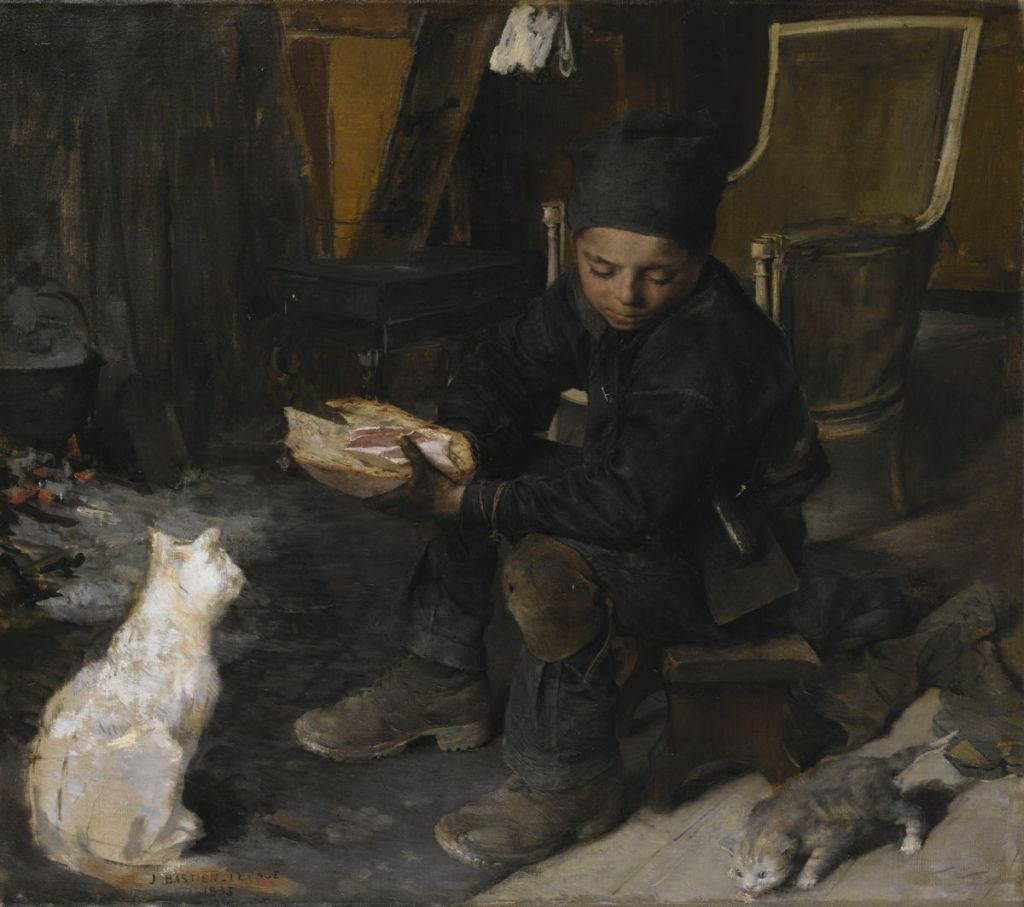In many households of the past, domestic animals which shared living space with humans included everything from chickens to cattle, but the most faithful companions have been cats and dogs. This weekend I look at small selections of paintings which cast light on human relationships with those most domestic of creatures: today I consider cats, and tomorrow I’ll go to the dogs.
Cats remain some of the most enigmatic creatures on the planet. They come and go as they please, sometimes seemingly by magic, can’t be trained as they actually train the humans around them, and think they’re still large and ferocious – which is only half wrong.
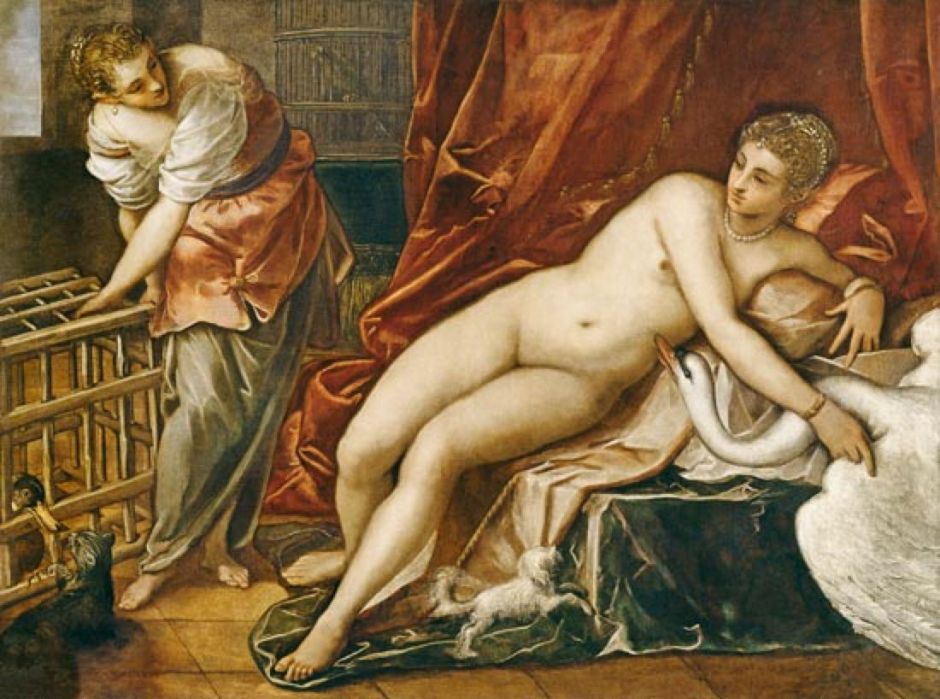
Tintoretto’s lap-dog, in his retelling of the ancient myth of Leda and the Swan from around 1578-83, is a similar size to the cat at the left, but the latter knows that yapping at a huge swan will get it nowhere, whereas the caged duck might prove better game.

There was a fad for humorous animal paintings during the Dutch Golden Age, when Abraham Teniers painted this comical view of a Barbershop with Monkeys and Cats. He understands the cat’s obsession with grooming.
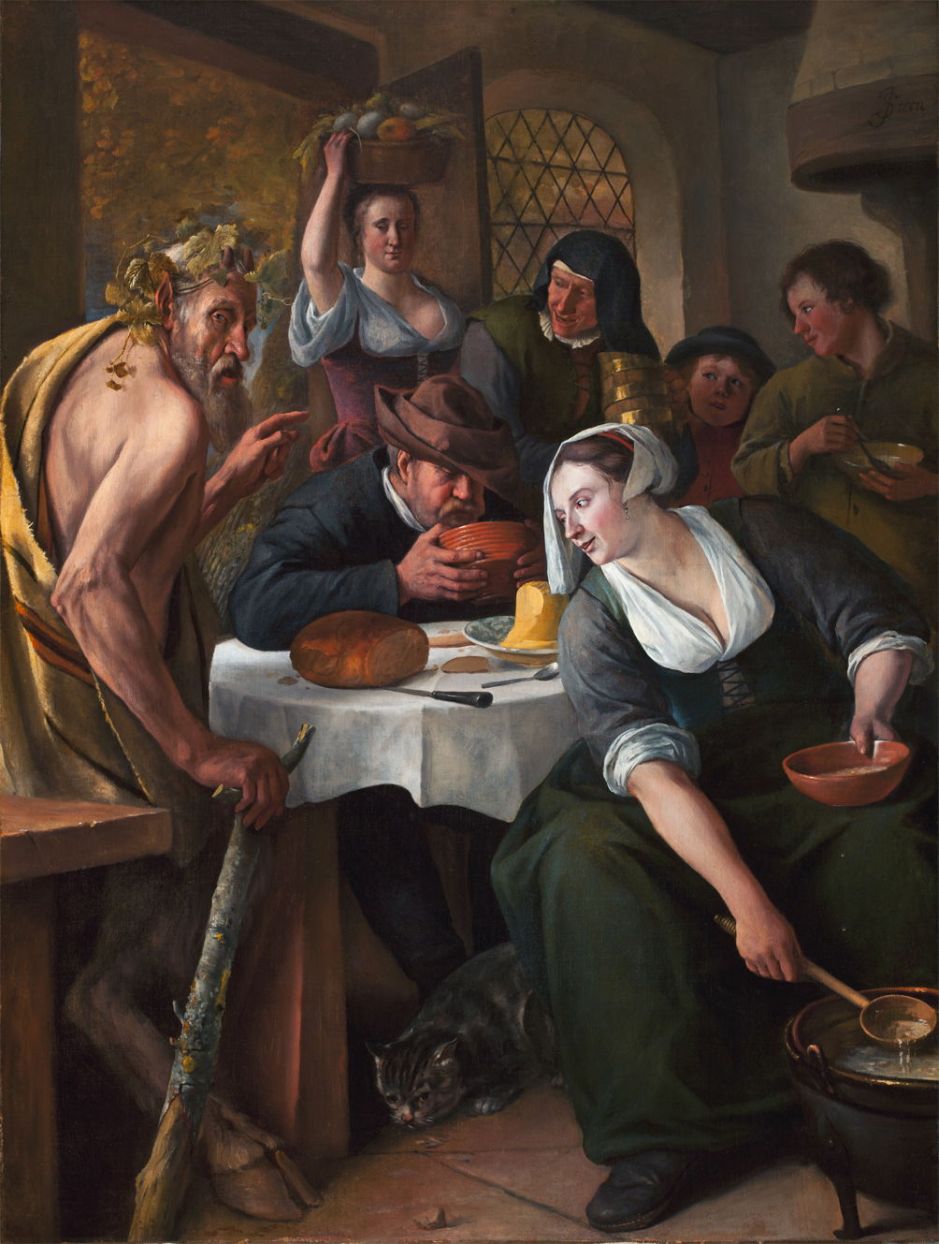
Like dogs, cats are well aware of the importance of skulking quietly where they might find food. Jan Steen’s retelling of the fable of The Satyr and the Peasant “Who Blows Hot and Cold” (c 1660) shows a feline scavenger poised under the table to feed on any carelessly dropped scraps.
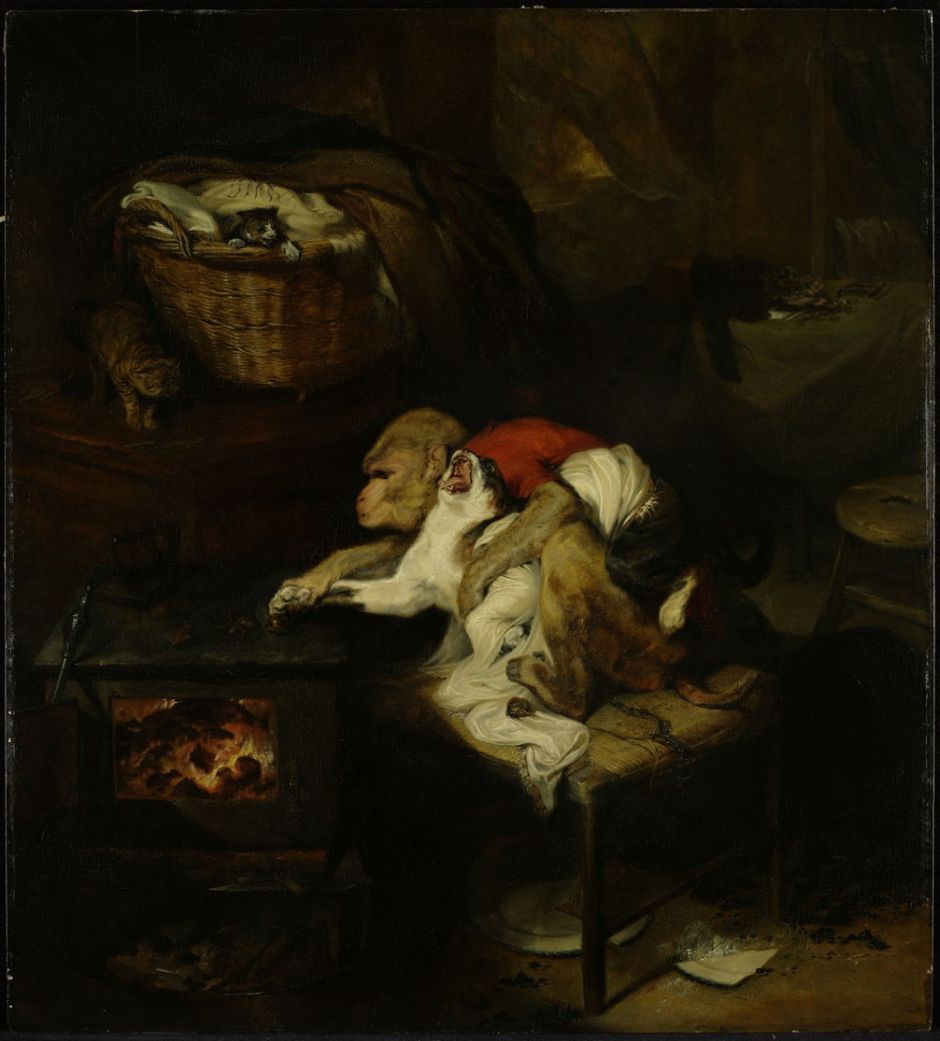
Perhaps the best-known and certainly the cruellest of fables involving cats is shown in Landseer’s The Cat’s Paw (c 1824). This was popularised in La Fontaine’s fable of the Monkey and the Cat (La Fontaine IX.17), and is thought to have originated in around 1560.
Bertrand the monkey was roasting chestnuts in the embers of a fire. Rather than risk burning himself retrieving the nuts from the heat, he promised Raton the cat a share of them if the cat would scoop them out for him. The cat agreed, and as Bertrand ate the chestnuts when they emerged from the fire, the cat’s paw became more and more burned. Before the cat could claim its reward, they were disturbed by a maid. The monkey then profited from the cat’s efforts and suffering, but the cat was cheated from enjoying its share.

Among the many connotations of the cat is with the ‘kept woman’ of the nineteenth century, shown so well in William Holman Hunt’s The Awakening Conscience from 1851-53. The cat under the table has caught a bird with a broken wing. The cat implies that the woman is being ‘kept’ and needs its company when her lover is away with his family, and the bird represents her moral plight.
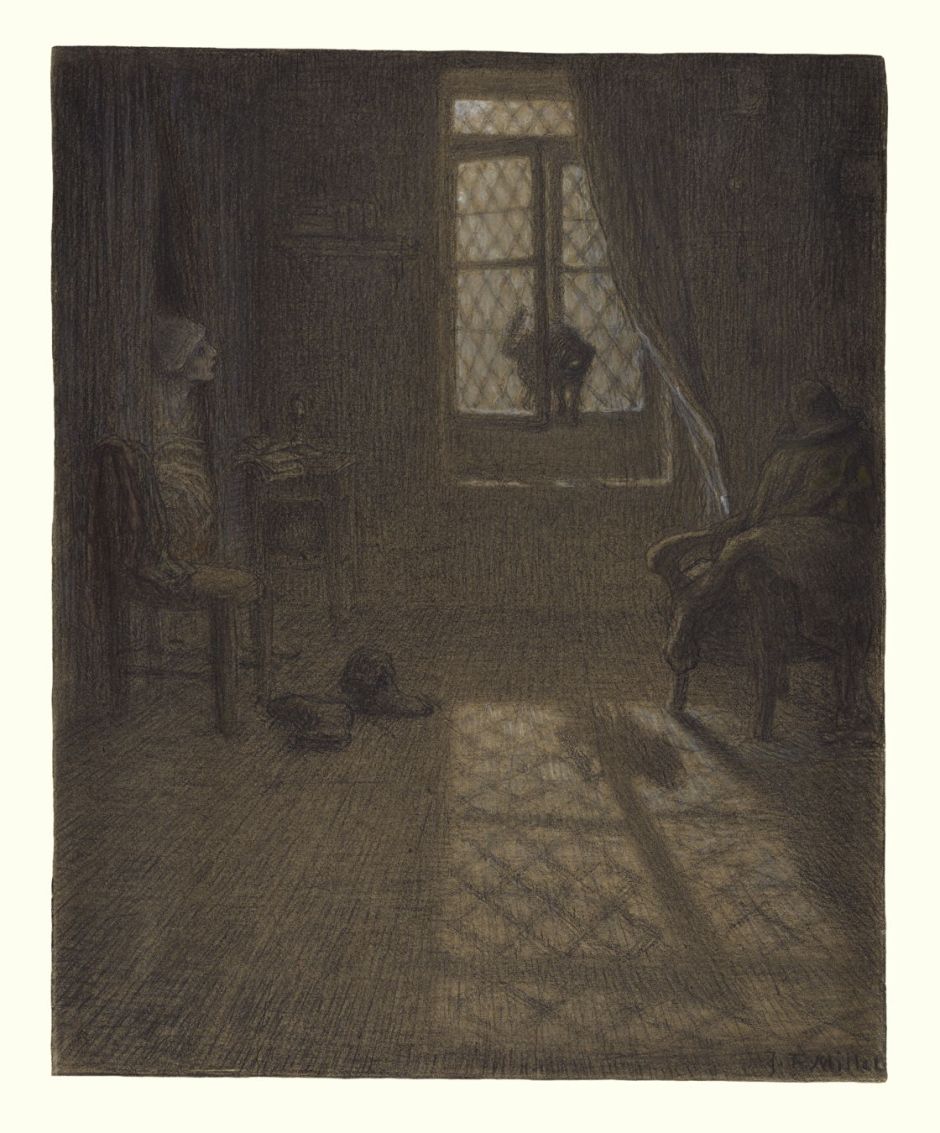
Millet found a more exotic fable involving a cat with a darker role. This is of Indian origin, from the Panchatantra, which also appears as Aesop’s Venus and the Cat, and La Fontaine’s The Cat Transformed into a Woman (La Fontaine II.18). A man became infatuated with his cat, and convinced the goddess Venus to change it into a woman, following which the couple married. On their wedding night, Venus tested her by introducing a mouse into the bedroom. She then sprang out of bed and chased the mouse across the room.
His marvellous drawing in Conté crayon and pastel titled The Cat at the Window, from about 1857-58, shows a man peering out from his bed-curtain at a black cat entering the bedroom through the window, as the moonlight casts a patterned shadow on the bare floor.
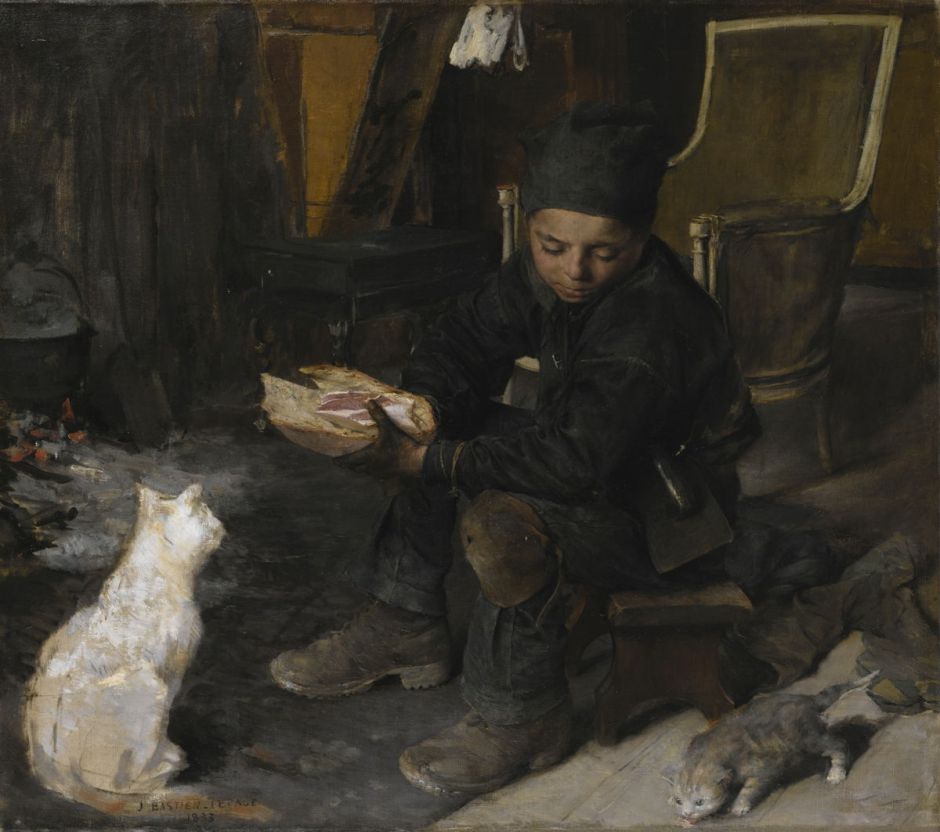
Cats can be companions even in the most difficult of circumstances, as shown in Jules Bastien-Lepage’s moving Little Chimneysweep (Damvillers), which he painted shortly before his death.

Cats appeared in some of the early nature paintings of Bruno Liljefors too. A Cat and a Chaffinch is one of several works containing ‘five studies in a single painting’ which he made in 1885 to demonstrate his virtuoso skills. That’s a cat to keep well clear of.

Gauguin’s fan painting of a Little Cat at a Bowl from 1888 shows a kitten who has half-climbed into a bowl on a table, a mealtime behaviour which seems to last well into old age.

Cats have long been associated with the night and the occult. Paul Ranson developed the theme of witchcraft early in his career, and in his Witch with a Black Cat from 1893 revisits this combination in a decorative style.
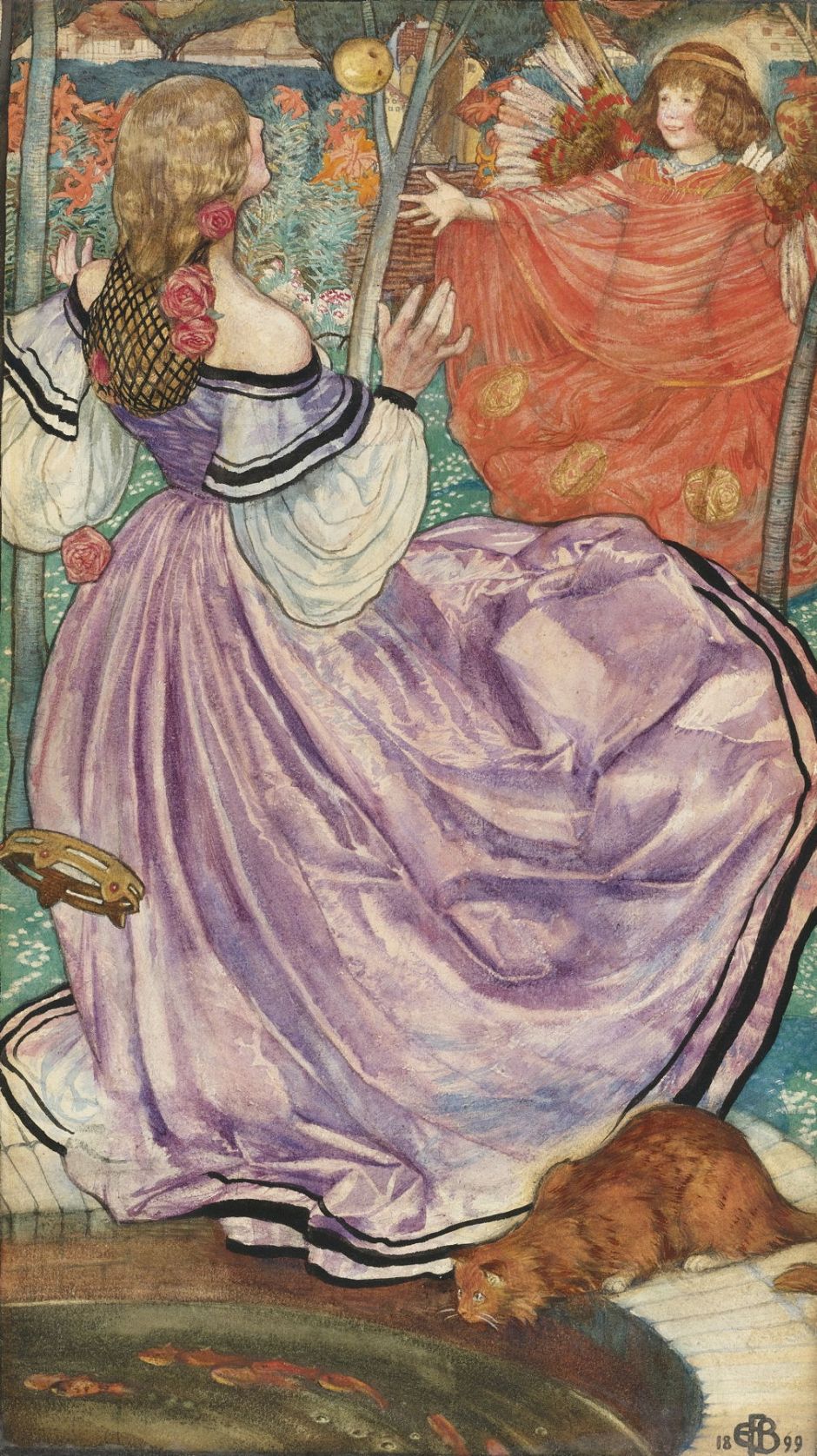
One of my favourite painted cats is that in Eleanor Fortescue-Brickdale’s watercolour The Gilded Apple, from 1899. This shows a fairytale princess being thrown a gilded apple; just as her crown is about to fall into the fishpond behind her there’s a cat sizing up a takeaway from the water.

Cats have an amazing ability to sit dissociated from everything that’s going on around them, just as does the cat in the foreground of Lovis Corinth’s Harem (1904). Recalling the association between cats, fleshly women and sensuality, this puss looks straight at the viewer and ignores the horseplay taking place behind it. How nonplussed can you get?
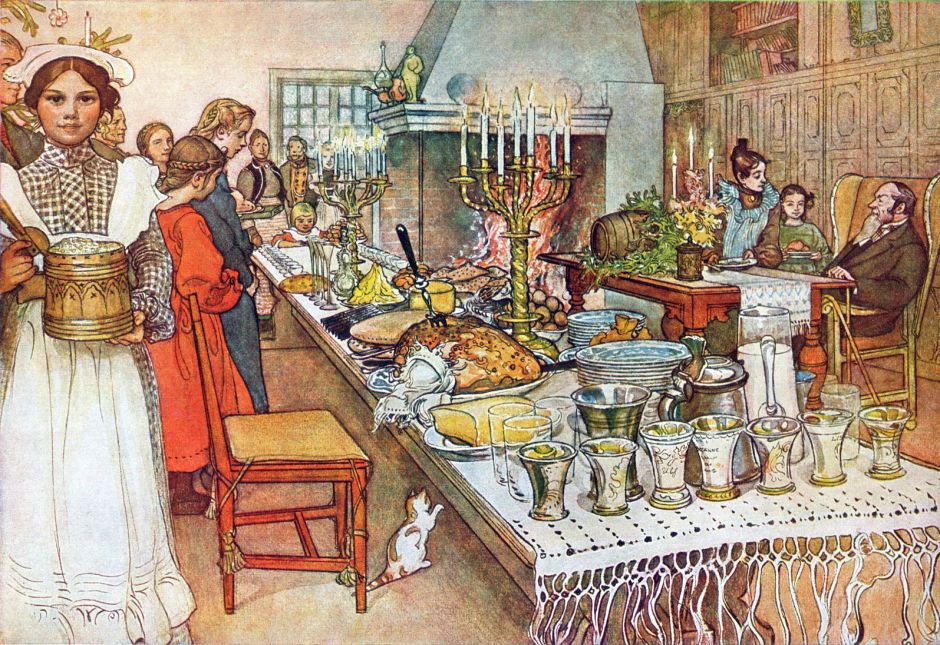
I also love Carl Larsson’s watercolour of his large extended family gathering for Christmas, with its huge turkey, roaring fire, and the cat under the table where it’s sure no one will notice it eating its share of the bird.

Hans Andersen Brendekilde noticed that dangerous combination of children and cat in his Soap-bubbles from 1906. This farm cat is unimpressed with what is absorbing the children, and waits for the moment that the younger child at the right drops some of their food, which looks as if it might prove as transient on the ground as the bubbles are in the air.
Pierre Bonnard had a close relationship not only with the mysterious Marthe but also with their pet cats and dogs, which he painted frequently.

In his Cats’ Lunch from about 1906, two women are sat at the table, feeding their four cats. Oddly, though, the women don’t look at the cats, nor at one another, but stare blankly into the space in front of them.
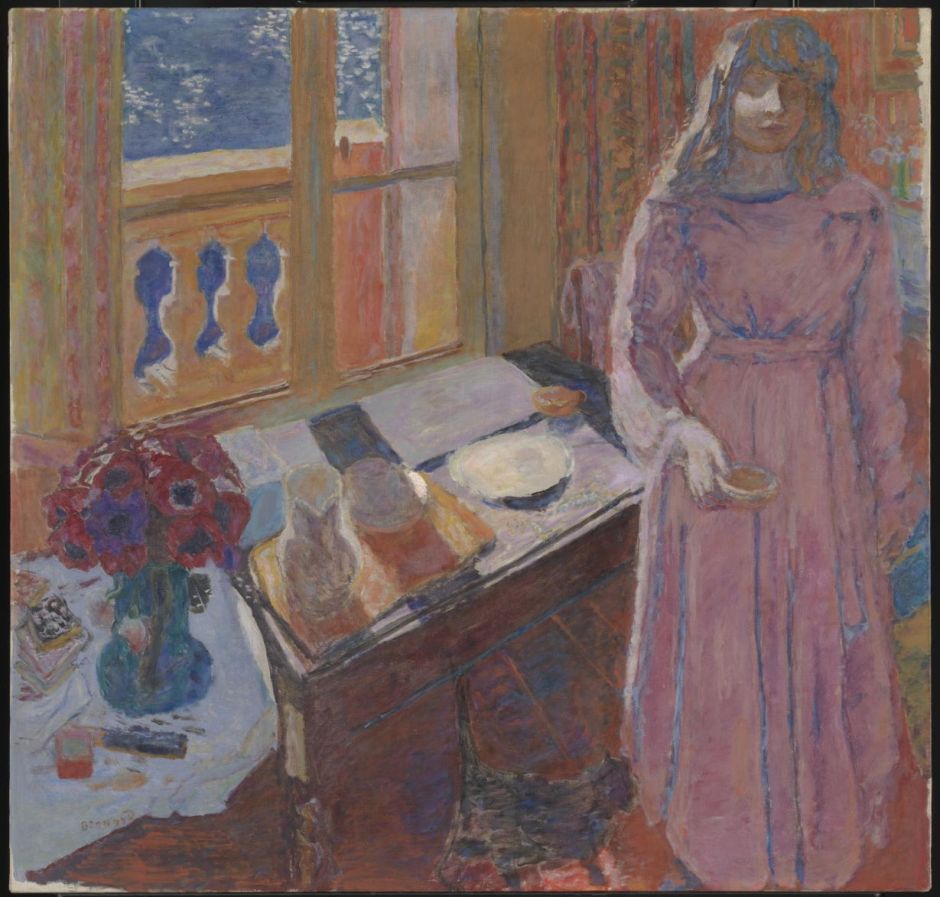
Perhaps Bonnard’s best-known painting of a cat is The Bowl of Milk from 1919. A woman has just poured milk into a small bowl, which she is now about to put down for her cat. The black cat is of course pacing the floor at the woman’s feet, but was only added to this composition in this final painting.
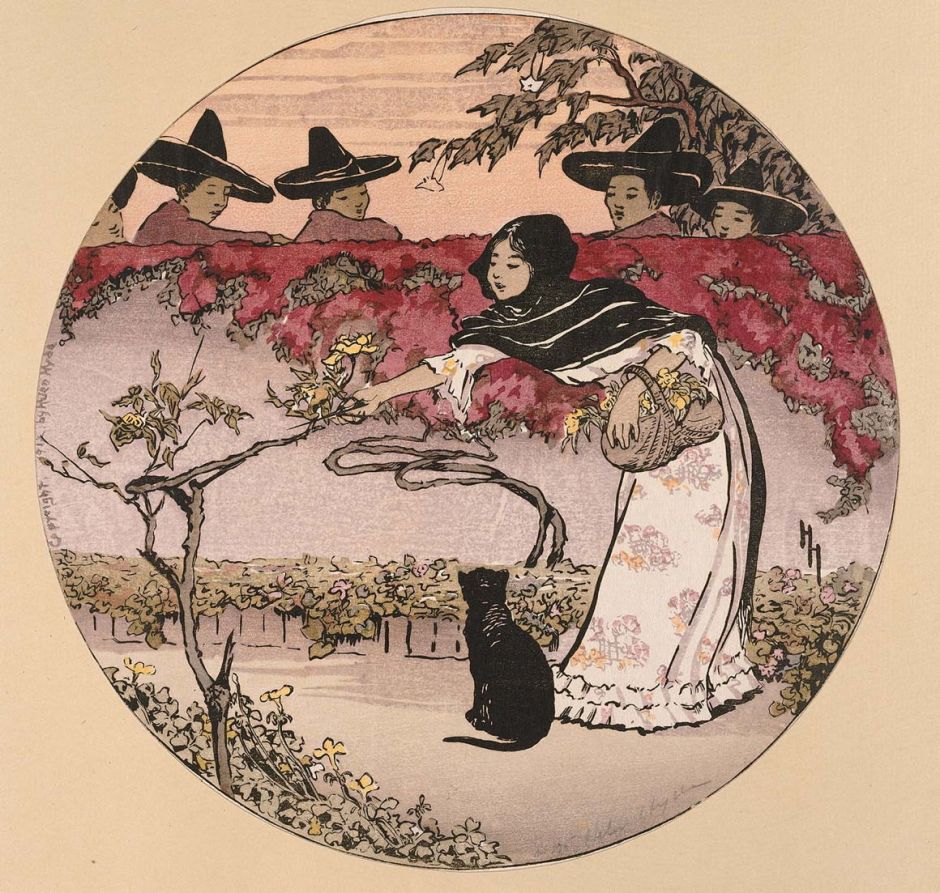
The American printmaker Helen Hyde associates a demure black cat, who is giving us a stern ignoring, with A Mexican Coquette, in this print from 1912.

My final painting for today is this wonderful work from the late years of the itinerant New Zealand artist Frances Hodgkins. In Purbeck Courtyard, Morning from 1944, Hodgkins shows the small yard behind tight-packed buildings, glowing red in the morning sunlight. In the centre foreground is a large cat basking in the sun, just as they do.

